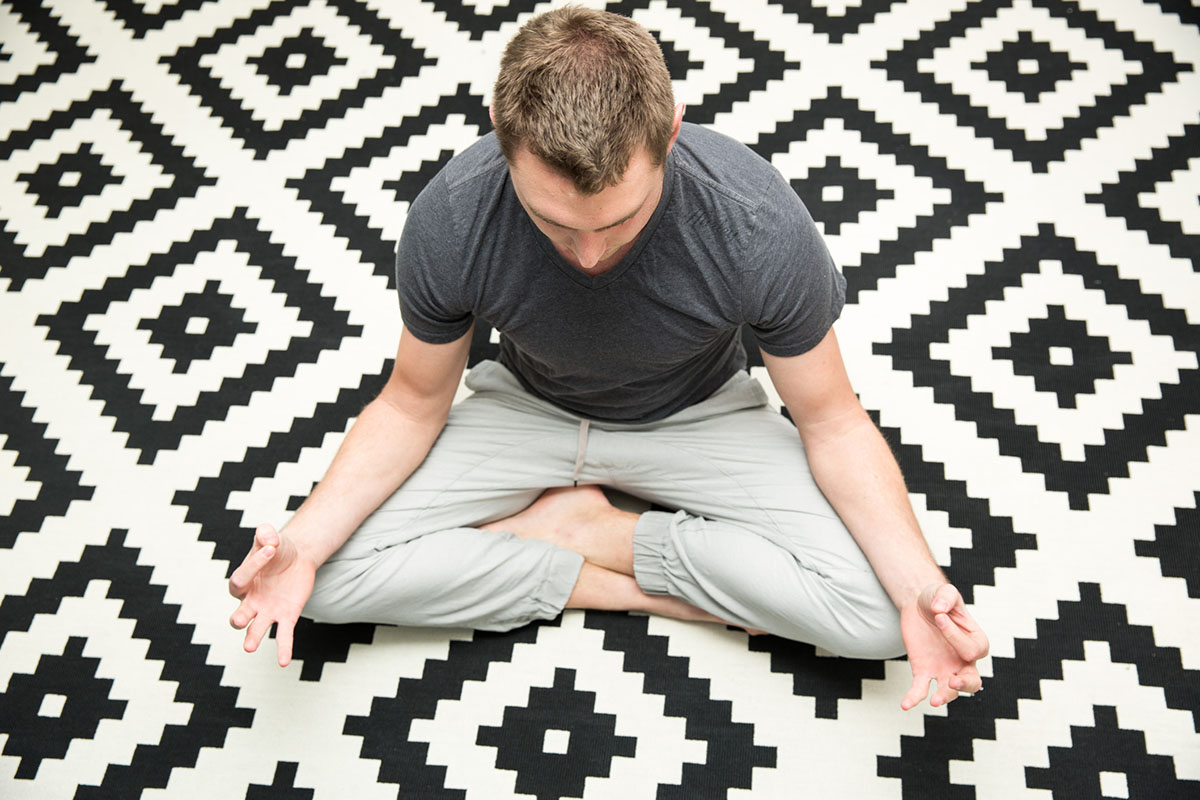Balancing a high-pressure career with our personal well-being is challenging enough—and for parents, there’s an…

Mindfulness for High Performers: How To Keep Calm in a Stressful World
Living in an “unprecedented time” hasn’t changed the day-to-day reality for most of us.
We need to go to work, we need to put food on the table, pay bills, and handle our personal obligations. There are family and friends to attend to, and the dreams and goals we’re still striving to meet.
If you’re a high-performing person or managing a high-performance workplace, it’s doubtful that the demands on your time, energy, and other resources have lessened over these past few years.
In fact, you might be feeling even more pressure to excel in an environment where an unusual number of new things are happening every day to compete with your focus and attention.
How can you bring that attention back to what requires it? How can you refocus on the things under your control and feel calmer in the process?
First, understand that if you’re struggling, you’re far from alone. Things are tough.
Then, consider adding a mindfulness practice to your high-performing lifestyle.
Read on!
What Is Mindfulness, Anyway?
Mindfulness might sound like a buzzword. And while its popularity as a concept has increased in recent years, the idea itself is centuries old.
In its most basic form, mindfulness is the practice of being present. When we are mindful, we are paying attention to the moment we’re in—everything happening around us—with acceptance and a lack of judgment. Mindfulness means simply experiencing the present moment.
In clinical psychology, when we talk about mindfulness, we’re referring to both the state of being present as well as the methods or tools we employ to get there.1
And the best thing about mindfulness is its accessibility—for a practice with such exceptional benefits, it’s uncommonly available. There are few barriers to mindfulness; there’s no high price tag or need for a shopping trip.
In fact, most of what you need to become and stay mindful are already within your possession.
Mindfulness Meditation for a High-Performance Lifestyle
Meditation isn’t the only way to practice mindfulness. In fact, while it’s incredibly valuable, it might just be the least convenient way to do it—especially for high-performing people who struggle to find extra time in their day.
Mindfulness meditation is, however, really (really) effective…
So let’s talk about it.
We know that mindfulness meditation can have a significant, positive effect on our ability to regulate our emotions over time.2 Some of this has to do with the very real impact simply calming down has on our nervous system.
Another factor is the ability of mindfulness meditation to give us space. If we can learn to focus on the present moment, breathe fully and deeply, and not immediately react to stressful, challenging situations, then we give ourselves the chance to make different choices.
And since common estimates put the number of choices we make every day at as high as 35,000,3 that’s an undeniably big deal.
How Do We Practice Mindfulness Meditation?
Remember when we said mindfulness meditation might be the least convenient method of practicing mindfulness?
That might be a bit misleading—because even as a standalone practice, all you really need is yourself, a comfortable place to sit, and at least three minutes of free time.
Yup—that’s it!
Here’s how to practice mindfulness meditation in only three steps.
1. Get Cozy
Find a comfortable place to sit. Having your feet on the floor is generally recommended. If this is uncomfortable or distracting for you, then just find a position that feels good.
If you can choose loose-fitting clothing, that’s great. But your high-performance office wear works just fine, too!
Grab your smartphone. Put it on silent. Set the timer for anywhere from three to five minutes. If you’re new to meditation or feeling particularly anxious, aim for less time. Meditation can feel challenging when it’s unfamiliar or in moments of stress—there’s no need to stress yourself out even more!
Close your eyes, and settle in.
2. Focus On Your Breath
First, simply pay attention to your breathing. Don’t try to adjust or force timed inhales or exhales. Do your best to clear your mind and focus on how the air is entering and exiting your body.
Notice your belly. Is it rising or falling with each breath? Or are you breathing more shallowly? Is the air caught in your throat or in your chest? As you continue to breathe, start to deepen your breaths. Focus on pulling the air into your belly, then gently pushing it out.
Keep gentleness in mind. Don’t force your breath or push beyond what feels comfortable in the moment. Otherwise, you’ll make yourself anxious—and that’s not what we’re going for!
3. Notice Your Thoughts
Our minds wander—it’s totally normal! And while it can be tempting to feel like this means we’ve “failed” at meditation, getting better at the practice actually means not judging ourselves for our ability to focus.
After all, what’s more intrusive and time-consuming? Is it the original thought we have when our minds wander, or is it the train of associated thoughts we have afterward, when we’re trying to justify or refute it?
The secret sauce of meditation isn’t preventing those wandering thoughts from occurring at all—it’s learning to notice them and let them pass as often as they come.
Wave hello, wave goodbye, and return to your breathing!
The Benefits of Mindfulness Meditation
Mindfulness meditation comes with many benefits, like stress reduction and better sleep. There’s even some evidence regular practice can result in improved immunity and better cardiovascular health.
You don’t need to meditate every single day to see results. Aim for three or four times per week, and you’ll start to see results.
Mindfulness & High-Performing People
If you’re a high-performing person, you’re likely no stranger to stress. And you know that not all stress is bad. A healthy level of stress can keep life interesting—it can even be motivating.
But prolonged stress can actually change your brain. When you’re consistently performing at a high level at work, in sport, or at home, you’re more likely to experience anxiety or burnout. It can be difficult to come back from.
Mindfulness is a way to manage stress over the long term. Prioritizing mindfulness means you’re engaging in this practice of self-care regularly and striving to strike a balance for your own mental health.
It can also help increase your ability to focus on the task at hand, help you break free of the multitasking myth, help you avoid dwelling on negative possibilities, and even improve your ability to listen.4
So not only is a regular mindfulness practice healthy, it can positively impact your performance, as well!
Incorporating Mindfulness Into the Everyday
Meditation is a wonderful way to incorporate mindfulness into your routine. It’s intentional and time-limited, and it doubles as a way to carve out some “you-time” from your day.
But meditation isn’t the only way mindfulness can show up in your life.
Here are three ways to be more mindful throughout the day.
1. Stop seeking perfection.
How many of us accept the imperfections of everyone around us—while mentally berating ourselves for every mistake we make?
Perfectionism is a dangerous habit. Lowering our expectations of ourselves and others allows us to succeed more often and more happily, while also giving us a much more realistic view of what “good enough” really means.
2. Notice your emotions—but don’t be ruled by them.
Our emotions play an enormous role in our daily lives. They can teach us a lot about ourselves and our deeply-held beliefs.
In order to learn from our emotions, however, we can’t be bogged down by them. If we’re quick to rationalize, justify, or run from our feelings, then we aren’t giving ourselves the space to figure out what we really need from any given situation.
3. Avoid dwelling.
It’s normal to want to rehash a challenging situation, especially if it’s something that’s hurt us in some way. Allowing those thoughts to become repetitive, though, can do more harm than good. Not only do we begin to dwell in the hurt, but we can easily find ourselves engaging in “mind reading,” assumptions, and subconscious storytelling in which we rewrite the narrative entirely.
Staying mindful means noticing these patterns and not judging their quality or ourselves for displaying them. Simply let them pass and return to the present moment.
4. Limit Your Consumption of Content
This includes social media and the news!
We already know the danger of comparison inherent to social media usage. Now, in a tumultuous political climate and grappling with an ever-evolving pandemic, we have to face the dangers of doomscrolling, as well.
If you aren’t familiar, the term “doomscrolling” refers to our propensity to seek out news and information about the topics that scare or depress us. And with the algorithms powering most popular social media platforms, we don’t have to work very hard—these websites will show us more and more of the same kinds of content we engage with.
But there are only so many valuable perspectives on the same piece of news. Resist the temptation to continue consuming news story after news story about any single event. Take the facts you need, and move on!
A Clinical Psychologist Can Help
Okay, but how do you “return to the present moment”?!
Great question! First, focus on your breathing. The goal is ultimately to notice your body and your breath.
If you’re too activated—too stressed or anxious—to do this successfully, however, that’s okay!
Try this coping strategy to bring yourself to a calmer place.
Ground yourself in the present moment by identifying:
- Five things you see around you,
- Four things you can touch in the moment,
- Three things you can hear right now,
- Two things you can smell, and
- One thing you can taste.
Focusing on your five senses can help bring you back to your body and deactivate your nervous system so you can engage in more intentional mindfulness or meditation.
And remember—if you’re feeling overwhelmed or like you need a helping hand, a clinical psychologist can work with you to get calmer and clearer. Contact the team at Amplify Wellness + Performance today.
Endnotes
1 https://www.apa.org/monitor/2012/07-08/ce-corner
2 https://www.ncbi.nlm.nih.gov/pmc/articles/PMC7455688/
3 https://www.psychologytoday.com/us/blog/stretching-theory/201809/how-many-decisions-do-we-make-each-day
4 https://www.forbes.com/sites/danabrownlee/2020/02/02/4-powerful-ways-mindfulness-encourages-peak-performance


